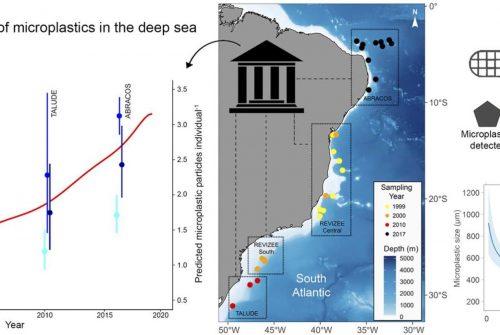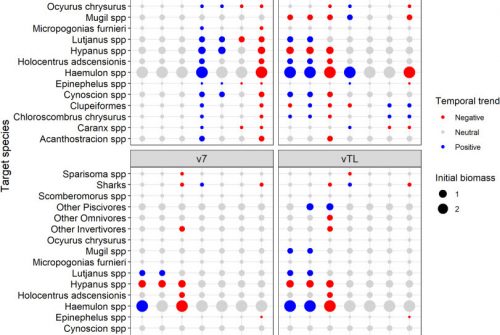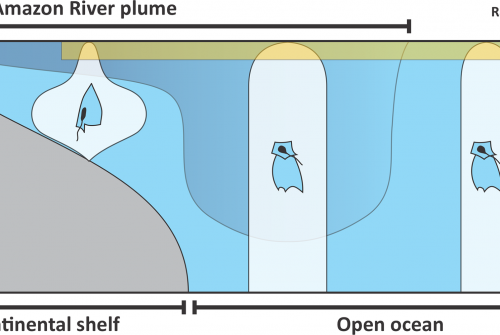
Tropical small-scale fisheries (SSFs) are characterised by their multidimensionality (fleets, gears, habitats, and species). As many targeted species move between habitats throughout their life cycle, managing coexisting fleets exploiting the same resource is challenging. However, the SSFs operating over multiple habitats target a variety of species and sizes and could benefit from a management strategy such as balanced harvest (BH)—harvesting all species and sizes in proportion to their production rate. To test this hypothesis, we characterised the fishing pattern (distribution of overall fishing pressure on species and sizes) of northeast Brazil SSFs targeting migratory species along an estuarine-shelf break gradient. Specifically, we described the relative captures by gear type and developed a conceptual model to understand fishers’ strategies. All ontogenetic classes of the twelve selected species were caught along the estuary-shelf break gradient, achieving a fishing pattern in line with BH. Young individuals and low trophic level species predominated in most gears. In that context, size limitations would not be sufficient to prevent overfishing and could prejudice the fleets that target small sizes. An ecosystem-based approach like BH, aiming to regulate the overall fishing pressure and consistent with the existing fishing pattern, should instead be promoted.
DOI: doi.org/10.1093/icesjms/fsab136
Reference








